Prices in AUD. Shipping worldwide. Flat rate $8 postage per order within Australia. International by weight calculated at checkout. Read full terms.
-

Armenia (1)
-

Bangladesh (5)
-

Bhutan (4)
-

Borneo (5)
-

Brunei (7)
-

Cambodia (5)
-

China (124)
-

Hong Kong (11)
-

India (83)
-

Indonesia (65)
-

Japan (418)
-

Korea (12)
-

Laos (3)
-

Macau (1)
-

Malaysia (25)
-

Maldives (1)
-

Mongolia (2)
-

Myanmar (6)
-

Nepal (7)
-

North Korea (8)
-

Pakistan (9)
-

Philippines (12)
-

Russia (42)
-

Singapore (37)
-

Sri Lanka (20)
-

Taiwan (3)
-

Thailand (25)
-

Tibet (12)
-

Vietnam (23)
-
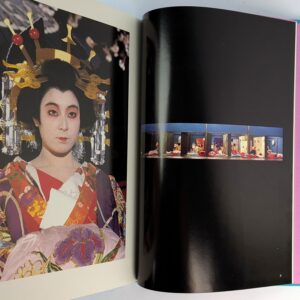
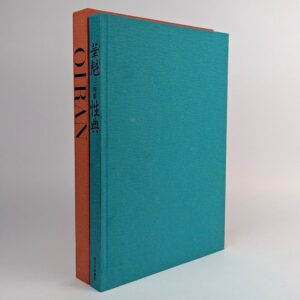
Oiran
AU$400.00 Read MoreAdd to cartTetsuji Takechi
Tokyo: Tokyo Academy of Arts, 1983.First edition photobook issued to accompany Takechi Tetsuji’s controversial late-career film Oiran, “A mixture of romance and sex combined with surrealistic horror elements.” The story is loosely based on the work of Jun’ichiro Tanizaki in which a 19th century Japanese prostitute moves to America and her dead lover manifests as a mole on her leg. Takechi was a prominent critic and kabuki director before moving into directing films in the 1960s. His 1964 feature Hakujitsumu is regarded as the first big budget pink film (Japanese movies with nudity or sexual content), and also the first Japanese production subjected to systematic fogging censorship. The following year, Black Snow (1965), led to his arrest on indecency charges, a landmark case he ultimately won, significantly reshaping Japanese film censorship and opening the way for the flourishing of the pink eiga genre through the late 1960s and 1970s. After a decade-long hiatus from cinema, Takechi returned with a more explicit remake of Hakujitsumu before directing Oiran in 1983. The film again brought him into conflict with the censors whom “edited and fogged in 98 different places, altering the film from a near-hardcore opus to a very soft costume drama.” Takechi promoted the film by proclaiming it featured “the first multicoloured penis in Japanese cinema.” The present photobook, issued uncensored, retains many of the film’s erotic stills and remains an important visual record of Takechi’s work. As usual for the period, explicit male nudity is absent. References: WEISSER: The Sex Films: Japanese Cinema Encyclopedia.
-
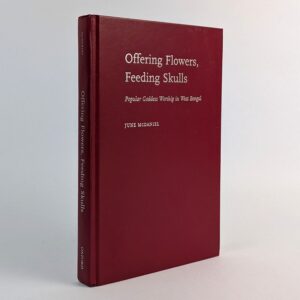
Offering Flowers, Feeding Skulls: Popular Goddess Worship in West Bengal
AU$50.00 Read MoreAdd to cartJune McDaniel
Oxford: Oxford University Press, 2004. -
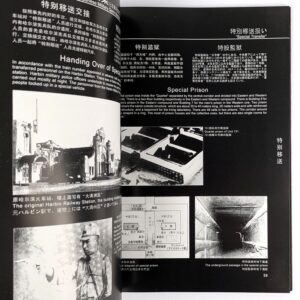
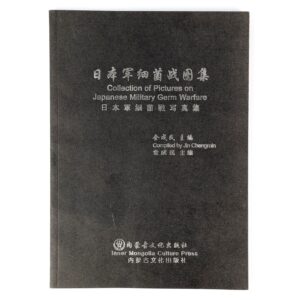
Collection of Pictures on Japanese Military Germ Warfare
AU$50.00 Read MoreAdd to cartJin Chengmin
Hulunbuir: Inner Mongolia Culture Press, 2010.Photographs and details on Japan’s chemical warfare Unit 731.
-
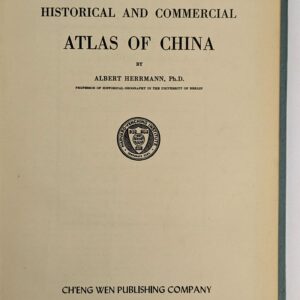
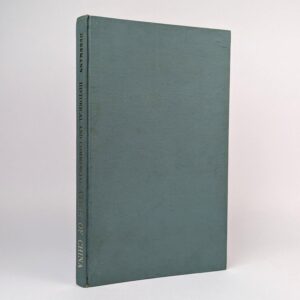
Historical and Commercial Atlas of China
AU$150.00 Read MoreAdd to cartAlbert Herrmann
Taipei: Ch’eng Wen Publishing Company, 1970.Harvard-Yenching Institute Monograph Series, Volume I. The second Taiwan printing.
-
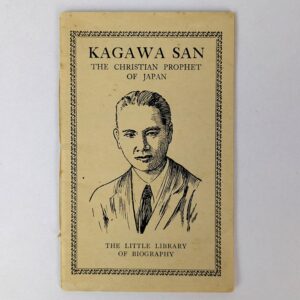
Kagawa San: The Christian Prophet of Japan
AU$200.00 Read MoreAdd to cartMaurice Whitlow
London: The Religious Tract Society, No date.Short biography on the Japanese Evangelical and labour activist, Toyohiko Kagawa (1888-1960). Part of the The Little Library of Biography, c. 1930s.
-
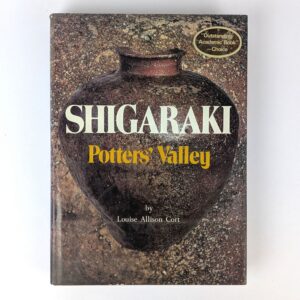
Shigaraki, Potter’s Valley
AU$120.00 Read MoreAdd to cartLouise Allison Cort
Tokyo: Kodansha, 1981. -
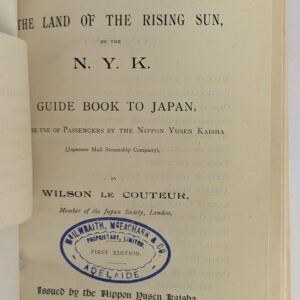
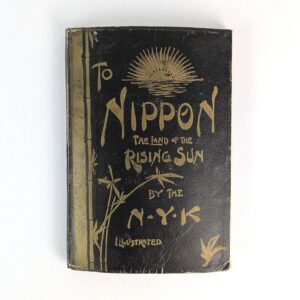
To Nippon, the Land of the Rising Sun, by the N. Y. K.
AU$500.00 Read MoreAdd to cartWilson Le Couteur
Tokyo: Nippon Yusen Kaisha, 1899.Guide Book to Japan, for the Use of Passengers by the Nippon Yusen Kaisha (Japanese Mail Steamship Company), together with a record of a journey from Australia to Japan. This copy with the tipped in slip advising of the managing Agents for Australasia and with the stamp of the Adelaide shipping company McIlwraith, McEacharn & Co.
-
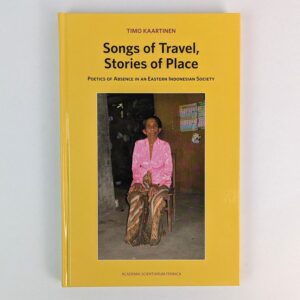
Songs of Travel, Stories of Place: Poetics of Absence in an Eastern Indonesian Society
AU$50.00 Read MoreAdd to cartTimo Kaartinen
Helskinki: Suomalainen Tiedeakatemia, 2010.This book explores the narratives of people who trace their origin to Banda, the famous Nutmeg Islands of Eastern Indonesia. They were displaced from their ancient homeland by the Dutch colonization of Banda in 1621 and carry on their language and traditions in the village described in this study. The Bandanese continue travelling to distant places in pursuit of recognition by their ancestral allies. They bring their past into life through rituals and verbal arts which commemorate absent travelers and anticipate their return. This book argues that ethno-history can be a source of exemplary acts which inform collective responses to new circumstances. The folk poetry of the Bandanese places real, historical events in several chronotopic frameworks in which they are relived as memory and given a total meaning as history. FF Communications No. 299 published by the Finnish Academy of Science and Letters.
-
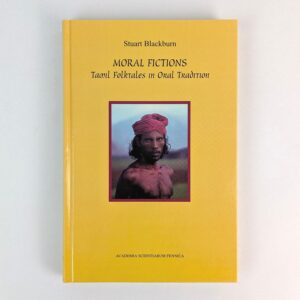
Moral Fictions: Tamil Folktales in Oral Tradition
AU$80.00 Read MoreAdd to cartStuart Blackburn
Helskinki: Suomalainen Tiedeakatemia, 2001.Is fantasy the defining element in fairy tales? This question is the starting point for Stuart Blackburn’s study of Tamil oral tales. Having collected over 300 tales, 100 of which are translated in this book, he concludes that although fantasy, and humour, are present, at the core of the tales lies a moral vision in which wrongdoing, especially physical cruelty, is punished. Only the second full-length study of Indian tales from oral tradition, this book places the Tamil tradition in an international context, describes the telling sessions and includes tellers’ interpretations of some tales. FF Communications No. 278 published by the Finnish Academy of Science and Letters.
-
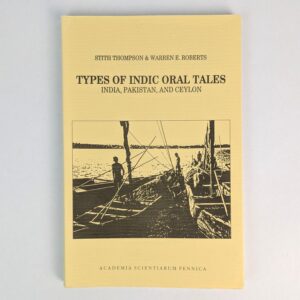
Types of Indic Oral Tales: India, Pakistan, and Ceylon
AU$30.00 Read MoreAdd to cartStith Thompson; Warren E. Roberts
Helsinki: Suomalainen Tiedeakatemia, 1991.Catalogue and analysis of Indic oral tales from India, Pakistan, and Sri Lanka, organised by tale-type and thematic motifs. FF Communications No. 180 published by the Finnish Academy of Science and Letters.
-
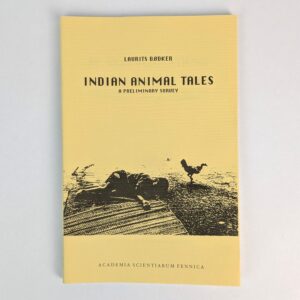
Indian Animal Tales: A Preliminary Survey
AU$30.00 Read MoreAdd to cartLaurits Bodker
Helsinki: Suomalainen Tiedeakatemia, 1991.Survey of Indian animal fables, tracing narrative structures, moral lessons, and cross-cultural folklore parallels. FF Communications No. 170 published by the Finnish Academy of Science and Letters.
-
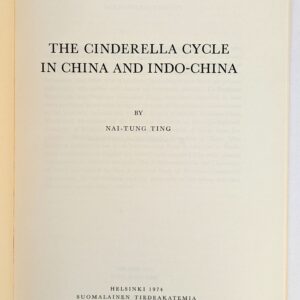
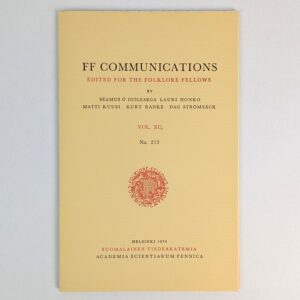
The Cinderella Cycle in China and Indo-China
AU$30.00 Read MoreAdd to cartNai-Tung Ting
Helsinki: Suomalainen Tiedeakatemia, 1974.Comparative folklore study of Cinderella-type tales across China and Indo-China, highlighting regional variants, motifs, and diffusion of the cycle. FF Communications No. 213 published by the Finnish Academy of Science and Letters.
-
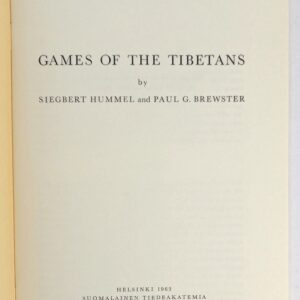
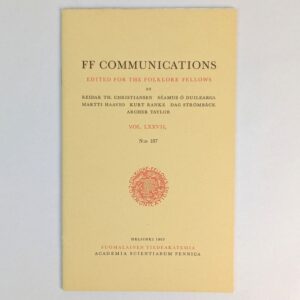
Games of the Tibetans
AU$40.00 Read MoreAdd to cartSiegbert Hummel; Paul G. Brewster
Helsinki: Suomalainen Tiedeakatemia, 1963.Ethnographic survey of traditional Tibetan games, combining cultural anthropology, folklore, and comparative play studies. FF Communications No. 187 published by the Finnish Academy of Science and Letters.
-
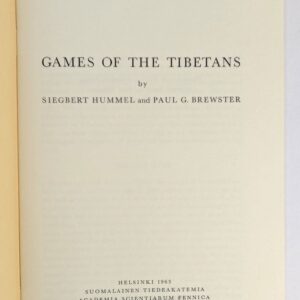
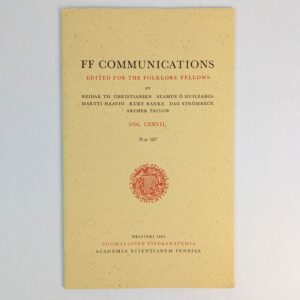
Games of the Tibetans
AU$30.00 Read MoreAdd to cartSiegbert Hummel; Paul G. Brewster
Helsinki: Suomalainen Tiedeakatemia, 1963.Ethnographic survey of traditional Tibetan games, combining cultural anthropology, folklore, and comparative play studies. FF Communications No. 187 published by the Finnish Academy of Science and Letters.
-
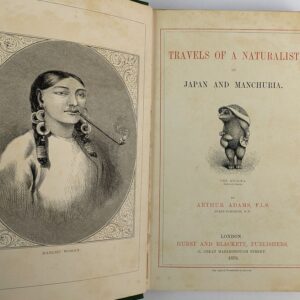
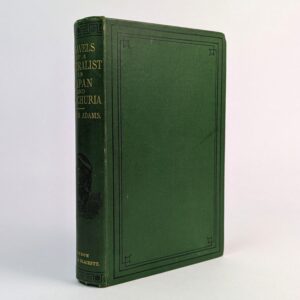
Travels of a Naturalist in Japan and Manchuria
AU$500.00 Read MoreAdd to cartArthur Adams
London: Hurst and Blackett, 1870. -
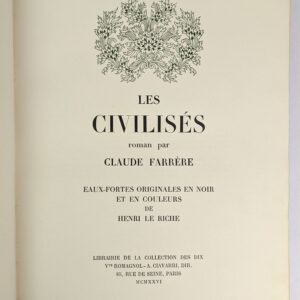
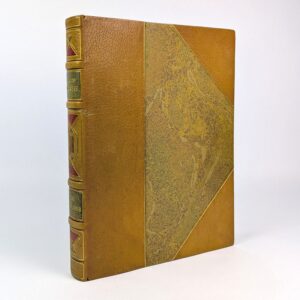
Les Civilises
AU$800.00 Read MoreAdd to cartClaude Farrere; Henri Le Riche
Paris: Librairie de la Collection des Dix, 1926.French colonizers indulge in fornication, opium, and general debauchery in late 19th century Saigon (then French Cochincina, modern day Ho Chi Minh City, Vietnam). One of 200 numbered copies of Arches vellum (of a total edition of 300), bound with the original wrappers.
-
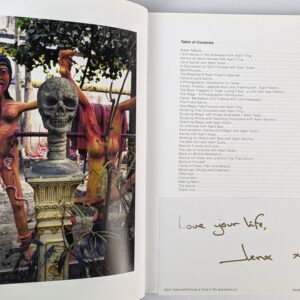
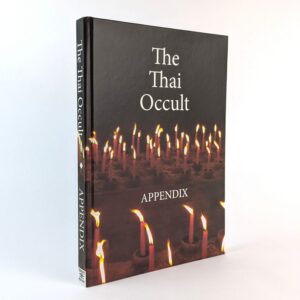
The Thai Occult Appendix
AU$200.00 Read MoreAdd to cartJenx
France: Timeless, 2020.“The final book in the series responds to the questions raised from this project and covers some requested topics. These include the Land Spirits, Spirit Houses, Studying the Wicha, the role of Karma and some final thoughts on the best way to enter the system.” (publisher’s blurb) One of the first 100 copies (of a total edition of 399) with a signed and numbered card by the author laid in, with a copy of this mounted to the rear pastedown.
-
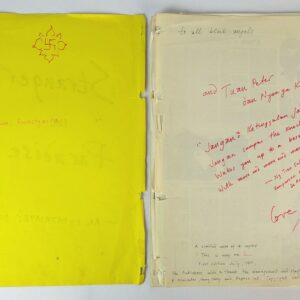
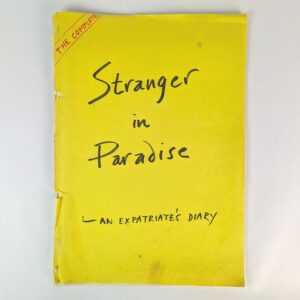
Stranger in Paradise: An Expatriate’s Diary
AU$400.00 Read MoreAdd to cartMade Wijaya
[Sanur]: Fotokopi, 1980.An Expatriate’s Diary. Made Wijaya (born in Sydney as Michael White, 1953-2016) was a landscape architect who left Sydney for Bali as a break from architectural studies at University of Sydney and stayed, immersing himself in the Balinese culture, consorting with royalty, and in 1975 was renamed Made Wijaya by a priest in a Hindu temple ceremony. This work was his first in his Fotokopi series of architecture/artists books, being a collection of articles recording his observations of life, culture, and architecture in his new home as he attends innumerable religious ceremonies. A detailed record from an expatriate perspective of culture and religion in Bali in the late 1970s. This is the First Edition published in an edition of only 4 numbered and signed copies, with a lengthy inscription from the author on the publication information page together with a gratified passport portrait photograph of the author.
-
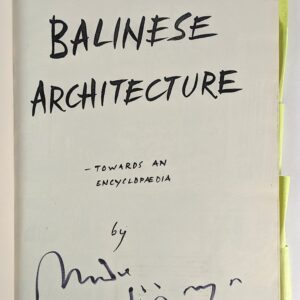
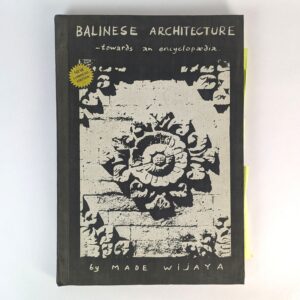
Balinese Architecture: Towards an Encyclopaedia
AU$500.00 Read MoreAdd to cartMade Wijaya
[Sanur]: Fotokopi, 1988.This book grew out of a report by students of the University of Sydney during a holiday design programme in Bali to which Wijaya was the tutor. “Most of the photographers were taken over the six months April – October, 1984. The selection is comprehensive in that it covers the full spectrum of Balinese Architecture — mountain to coastal, north to south, palatial to makeshift..” (from preface) Made Wijaya (born in Sydney as Michael White, 1953-2016) was a landscape architect who left Sydney for Bali as a break from architectural studies at University of Sydney and stayed, immersing himself in the Balinese culture, consorting with royalty, and in 1975 was renamed Made Wijaya by a priest in a Hindu temple ceremony. The New Compiled Edition, combining volumes 1 and 2. Photocopied pages (as issued) with 14 original colour photographs pasted in (copies are known to have differing numbers of added photographs). One of 50 numbered and signed copies, this copy further inscribed by Wijaya to the title page, and with numerous manuscript corrections as well as additional information tabs further describing many of the illustrations.
-
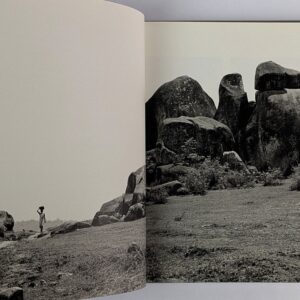
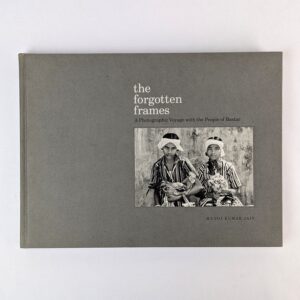
The Forgotten Frames: A Photographic Voyage with the People of Bastar
AU$40.00 Read MoreAdd to cartManoj Kumar Jain
[Uttar Pradesh]: Manoj Kumar Jain, 2014.
